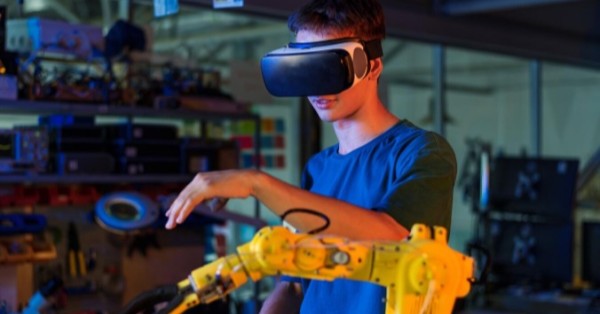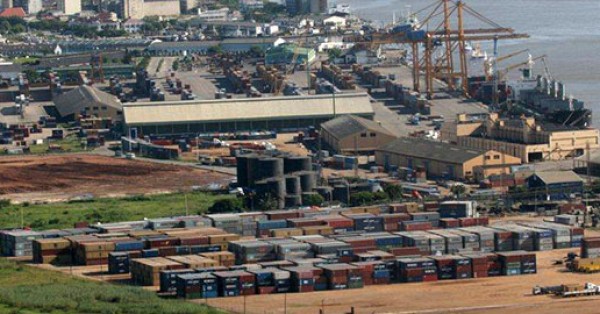Manchester: The Phoenix City (With Persistent Panhandlers)
After 45 years away, I returned to Manchester for the UK Space Conference, half-expecting to find the same gritty, sun-starved city I remembered from the 1970s. Back then, Manchester was about as glamorous as a wet Tuesday in a car park – all industrial grime and Victorian melancholy. But lo and behold, the city has transformed itself into “Manhattanchester,” a gleaming fusion of glass towers and restored Victorian splendor that would make even the most jaded urbanist weep tears of architectural joy.
Manchester in 1971
Of course, some traditions die hard. Within minutes of arrival, I was greeted by an extremely aggressive panhandler – proof that while cities may evolve, human nature remains refreshingly consistent. At least the distances seemed shorter than I remembered, though that might just be the difference between adult stride and childhood perception, where five minutes felt like geological epochs.
Manchester – Same building today
The conference itself was a delightful mix of rocket science and marketing wizardry. AstroAgency ran a brilliant marketing workshop that taught me the art of explaining complex products without inducing narcolepsy in potential customers. Their crown jewel example came from Orbit Fab, who described their business as “Gas Stations in Space” – pure genius in four words.
I spent considerable time evangelizing about AI-powered data analyst that delivers answers in seconds rather than geological ages, translates English questions into plain English results, and works with everything from databases to spreadsheets. Think of it as BI for normal people – the kind who don’t dream in SQL queries or get excited by pivot tables.
Surprisingly, despite being surrounded by companies drowning in data, there wasn’t much enthusiasm for these particular AI capabilities. It’s that classic smart-person syndrome: “I know how to do that manually, so why would I need automation?” It’s like a chef refusing a food processor because they can chop onions by hand. I suspect as these companies mature and their customers demand more self-service analytics, they’ll come around to solutions like ours.
Laser Beams and Methane Dreams
Optical links to satellites were the conference’s hot topic – apparently, everyone wants to shoot laser beams at space hardware. Manchester might not seem like the ideal location for this (given its historical relationship with sunshine), but the applications are fascinating. The technology promises bulk data transfer where latency isn’t critical, though I can’t help wondering about the security implications. A powerful laser pointing at your satellite could render optical communication rather mute, unless you’re clever with narrow spectral band filters that can rotate.
GHGSAT stole the show with their methane-detecting satellites that can pinpoint emission sources with surgical precision. This technology is brilliant for both commercial applications and government monitoring – good for business, good for the environment. Though it does raise the philosophical question: is it now dangerous to fart outdoors? Could their satellites actually detect individual human contributions to atmospheric methane? The mind boggles.
UK Space Conference
The AI Space Dilemma: To Compute or Not to Compute
The “AI in Space” debate raged throughout the conference with no clear winner. It’s a fascinating trade-off between power consumption, data bandwidth, and processing capability. NVIDIA chips, with their tiny transistors, are vulnerable to cosmic radiation that can cause catastrophic failures, while FPGAs (the space industry’s darling) require multiple transistor disruptions to fail.
I had an enlightening conversation with the Chief Engineer at BAE, who argued that shielding chips isn’t particularly difficult, but powering an NVIDIA GPU in space is like trying to run a small city on solar panels. The fundamental question remains: is it better to send all your data earthward (expensive in bandwidth) or process it in space (expensive in power and weight)?
Perhaps the optical communication folks will solve this puzzle by making data transmission virtually free – though “virtually” and “free” are words that make accountants break out in hives.
Standards, Students, and Scottish Success
Product lifecycle management in space companies appears to be about as organized as a toddler’s toy box. When there’s a significant chance your product might become an expensive firework on the launch pad, long-term planning takes a back seat. AB5 Consulting is helping companies navigate the labyrinth of RF and communication standards that we take for granted in consumer electronics – crucial work for an industry populated largely by brilliant scientists who’ve spent more time in university labs than dealing with regulatory bureaucracy.
Obrex received a well-deserved shout-out from the European Space Agency during the keynote session. It’s wonderful seeing a Scottish company get recognition on the international stage – I’m hoping to wrangle an invitation to visit them in Forres. Road trip to Scotland plus cool space technology? Count me in.
The student rocket teams were absolutely inspiring, showcasing the hands-on spirit that’s often missing from modern education. One group had just returned from California where their rocket achieved 17,000 feet instead of their hoped-for 140,000 feet – but their enthusiasm remained stratospheric. This kind of practical experience will serve them well regardless of their future careers.
AI Anti-Jam and Platform Pints
INTEGRASYS from Spain caught my attention with their AI-powered anti-jamming communication systems – because apparently, even space communications need to worry about being disrupted by digital troublemakers.
Most business still flows from government contracts, which creates an interesting funding ecosystem with all the stability of a house of cards in a hurricane. The transition to commercial markets will be fascinating to watch, assuming the industry can navigate the bureaucratic asteroid field.
The Journey Home: Delayed by Yahoos, Saved by Cider
My return journey provided the perfect British ending: delayed 40 minutes in Lancaster because some brilliant individuals decided the train tracks made an excellent walking path. If we billed these track-wandering yahoos for all the passenger delay fees, they might reconsider their recreational choices.
Fortunately, Lancaster station features a delightful pub right on the platform – civilization at its finest. I enjoyed a £5.40 pint of cider in glorious weather, watching trains that weren’t mine arrive and depart. Sometimes the best part of a journey is the unexpected pause, especially when it involves reasonably priced alcohol and actual sunshine in England.
The space industry is evolving rapidly, driven by AI innovations, optical communications, and environmental monitoring that would have seemed like science fiction just a decade ago. Companies like SCOTi are positioned to help this data-rich industry make sense of their information explosion, while pioneers like Orbit Fab, GHGSAT, and Obrex push the boundaries of what’s possible above our atmosphere.
Now, if only we could train those track-walking yahoos to use AI to predict train schedules…



































